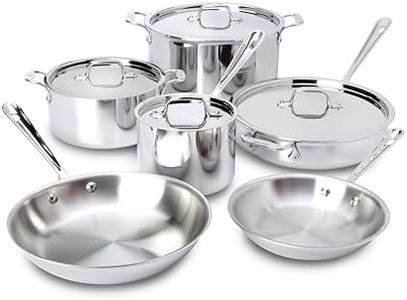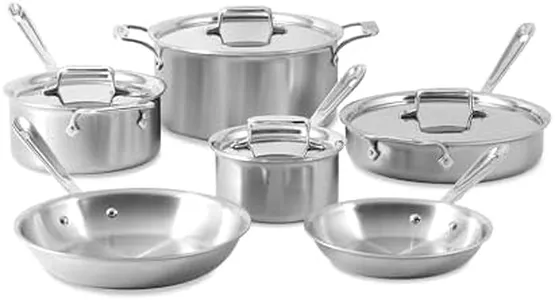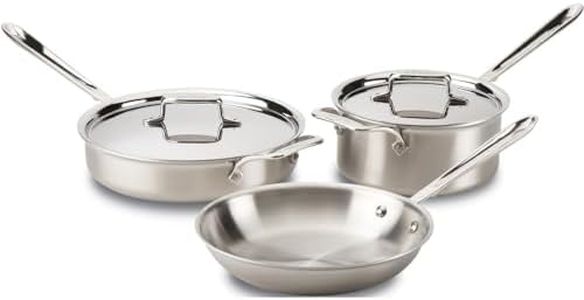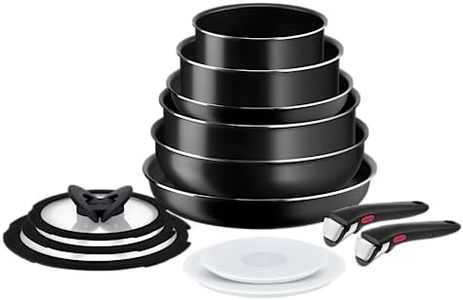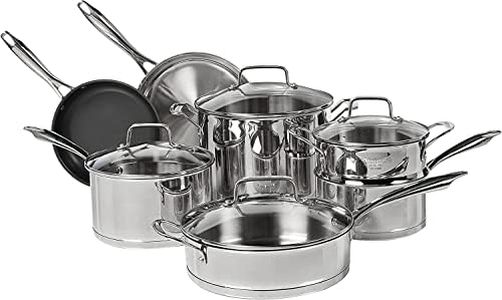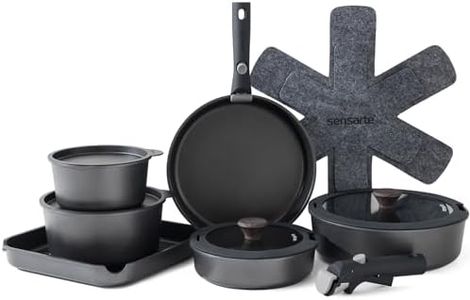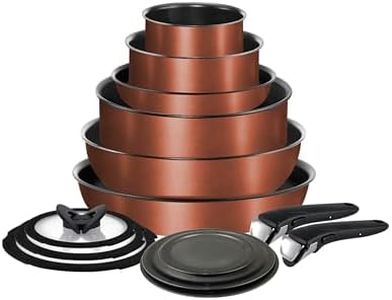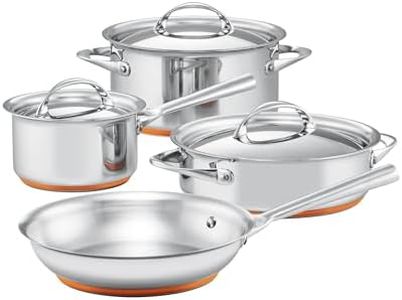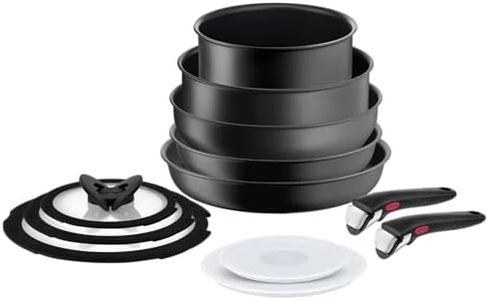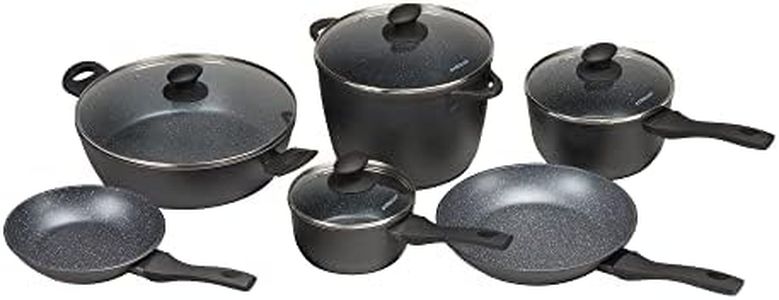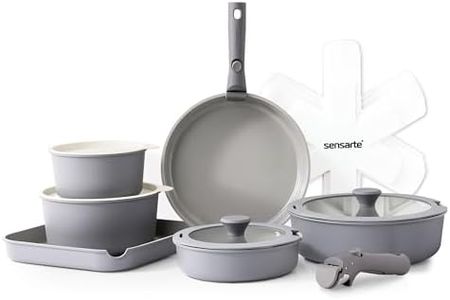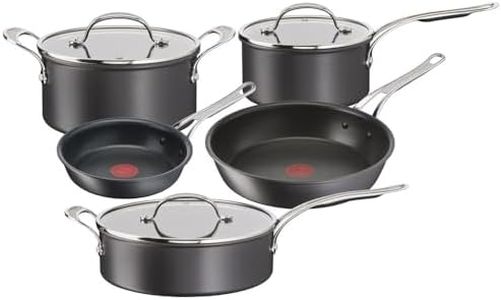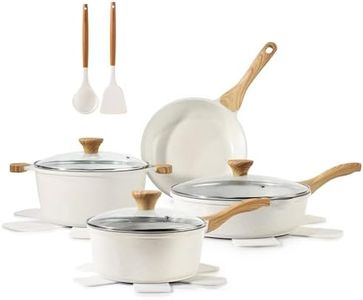We Use CookiesWe use cookies to enhance the security, performance,
functionality and for analytical and promotional activities. By continuing to browse this site you
are agreeing to our privacy policy
10 Best Induction Cookware Sets
From leading brands and best sellers available on the web.By clicking on a link to a third party's website, log data is shared with that third party.
Buying Guide for the Best Induction Cookware Sets
When picking induction cookware sets, it’s important to know that not all pots and pans work on induction stoves. Induction cooking uses magnetic fields to heat cookware directly, making it faster and more energy-efficient than traditional stovetops. The right cookware set will give you safe, efficient, and even cooking results, and should last for years if cared for properly. To make the best choice, you’ll want to understand what makes cookware induction-compatible, the types of materials available, and key features that suit your cooking habits.Induction CompatibilityInduction compatibility means the cookware can work on an induction cooktop. The bottom of the pan must be magnetic for the induction field to transfer heat properly. To check this, see if a magnet sticks firmly to the base; if so, it’s induction-ready. This is crucial because non-compatible pans simply won’t heat up on induction stoves. Some cookware is labeled 'induction-ready' for convenience. When shopping, this should be the first thing you check, as it is a dealbreaker for induction cooking.
MaterialInduction cookware comes in various materials, such as stainless steel, cast iron, and sometimes aluminum with a magnetic base. Stainless steel, especially when layered with aluminum or copper, offers good heat distribution and resists corrosion. Cast iron holds heat very well but can be heavy and may require more maintenance. Aluminum sets heat quickly but must have a base specifically made for induction. Consider what you value more—durability, even heating, weight, or ease of care—when choosing the right material for your needs.
Base Thickness and ConstructionThe thickness and construction of the base affects how evenly heat is distributed and how well the cookware retains heat. A thicker base usually means more even heating and less chance of hotspots or warping over time. Some cookware uses multi-layer (clad) construction, which combines several materials for better performance. For daily cooking and reliability, look for cookware with solid, flat, and preferably heavy bases; thinner bases may be lighter but won't perform as well for demanding tasks.
Set Composition (Pieces and Types of Pans)A cookware set can include a variety of pan sizes and types, such as frying pans, saucepans, stockpots, and sometimes extras like lids or utensils. Think about the kinds of meals you cook most often: do you need several saucepans for sauces, or is a large stockpot more important for soup? Sets range from minimal (5-piece) to complete (10-piece or more). Pick a set with pieces you'll actually use—and remember, more pieces doesn't always mean better value if you don't need them.
Oven and Dishwasher SafetySome induction-friendly cookware can also be used in the oven or cleaned in a dishwasher, but not all. If you like finishing dishes in the oven or want easy cleanup, check if the set is rated safe for oven use and dishwasher cleaning. The temperature rating is important for oven use; higher ratings are better for versatility. If you prefer washing by hand or seldom bake, this may be less important for your needs.
Handles and LidsHandles should feel sturdy and comfortable, as you'll be lifting and moving cookware often. Metal handles are more likely to survive oven use, while silicone or plastic may stay cooler but aren't always oven-safe. Lids come in glass or metal: glass lets you see your food but may not be oven-safe to the highest temperatures. Match the handle and lid features to your cooking and cleaning habits for the best experience.
